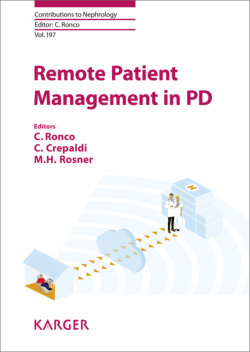Читать книгу Remote Patient Management in Peritoneal Dialysis - Группа авторов - Страница 16
На сайте Литреса книга снята с продажи.
PD Dose
ОглавлениеDuring early days of PD, the dose of PD was primarily determined by plasma chemistry, anemia indices, and clinical parameters. PD was often prescribed for 10 h for few days of the week. In the 1980s, Popovich-Pyle introduced the concept of mass transfer area coefficient that calculated the maximum theoretical clearance of a solute by diffusion [16]. In the 1990s, Haraldsson [17] re-examined urea kinetics in PD. This research was seminal in leading to the development of guidelines underscoring the minimal urea clearance necessary for PD, thus providing guidance on dialysis dosing in PD. Later, Bargman et al.’s [18] reanalysis of the CANUSA study highlighted the importance of residual renal function in determining patient outcomes in PD.
Over the last few years, there has been a re-emergence of the concept of incremental PD, it not only provides adequate dialysis but also emphasizes the importance of preservation of residual renal function and minimizes therapy burden [19]. Progressive loss of residual renal function adversely impacts the clearance of middle and large molecules. A majority of patients have to switch to hemodialysis once they become anuric. This is especially relevant in those on continuous PD with maximum prescribed fluid volumes. In this context, the concept of Continuous-Flow PD (CFPD), first described by Shinaberger et al. [20] becomes relevant. CFPD offers a mode of PD with a continuous flow-through of dialysate into and out of the peritoneal cavity. This technique requires either 2 PD catheters or a double-lumen catheter. Dialysate is infused through one port and is simultaneously drained from the second. Table 2 summarizes the advantages and disadvantages of this modality. Detailed reviews can be found elsewhere [21].
Table 2. Continuous-Flow Peritoneal Dialysis (CFPD): advantages and disadvantages, adapted from Ref. [21]
